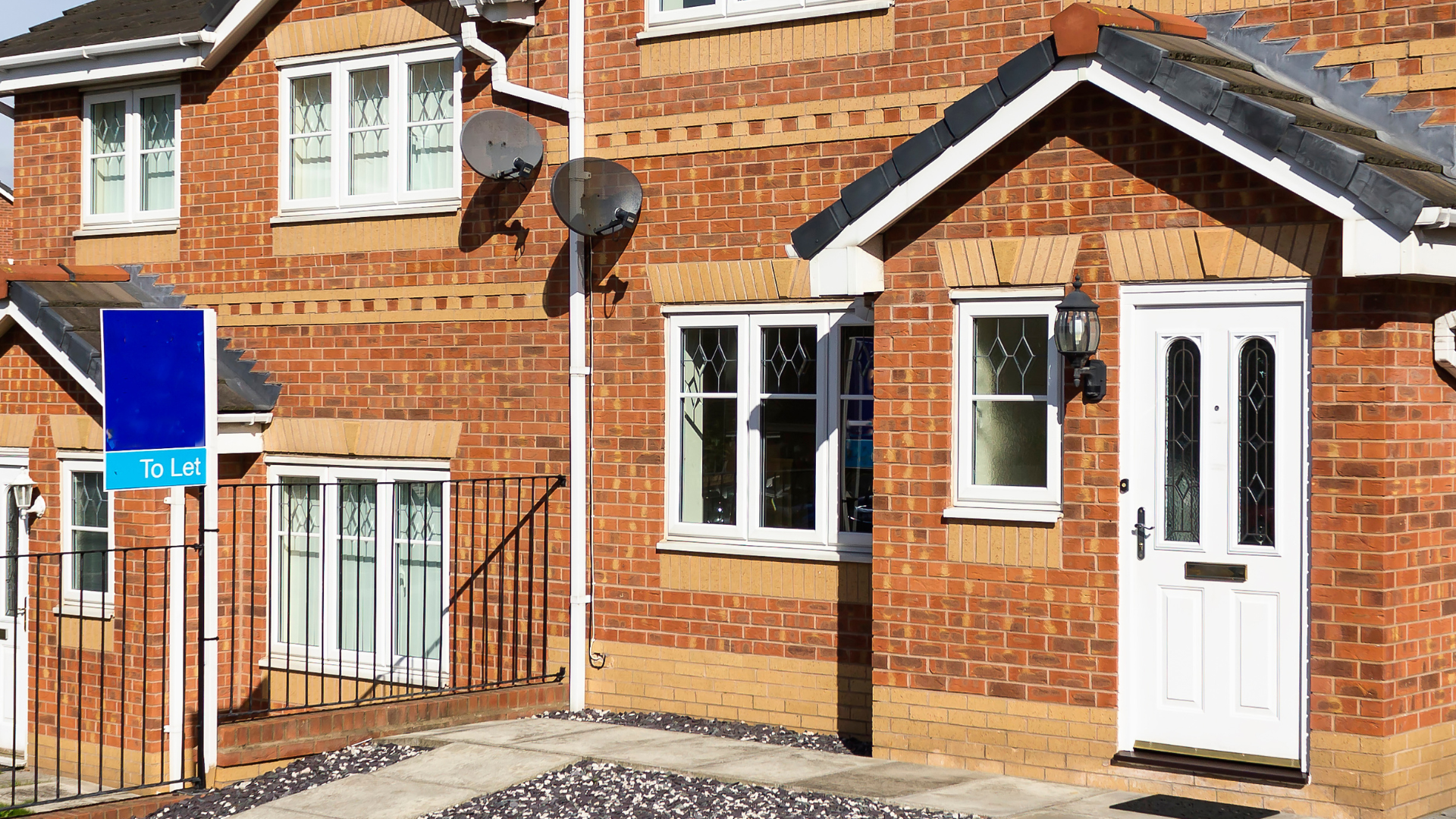- What is a Consumer Buy to Let Mortgage?
- How Do Consumer Buy to Let Work?
- Who Qualifies For A Consumer Buy-to-Let?
- How Much Can I Borrow?
- Lenders and Mortgage Products
- Consumer Buy To Let vs. Standard Buy To Let Mortgages
- Should You Get A Consumer Buy To Let Mortgage?
- How To Apply For Consumer Buy-To-Let Mortgages?
- Key Takeaways
- The Bottom Line
Consumer Buy-To-Let Mortgages: What You Need To Know

Did you unexpectedly become a landlord?
Maybe you inherited a house, moved in with a partner, or you took a job in a new city. Whatever the reason, renting out your current home can be a good option.
But traditional buy-to-let mortgages might not be the best fit.
Consumer buy-to-let (CBTL) mortgages are designed for accidental landlords like you. They offer more flexibility and protection compared to regular options.
Curious? Find out if a CBTL mortgage is a good fit for your situation.
What is a Consumer Buy to Let Mortgage?
Consumer buy-to-let mortgages are special mortgages for accidental landlords.
These are people who rent out their home because of unexpected situations, not because they planned to be landlords.
They offer more flexibility and protection than regular buy-to-let mortgages.
How Do Consumer Buy to Let Work?
If you inherited a house, took a job in a new city, or need to be away for a while–you’re counted as an accidental landlord.
Lenders understand that being an accidental landlord wasn’t your plan. So, when you apply for a consumer buy-to-let (CBTL) mortgage, they look at your unique situation.
They’ll check how much rent you could get from the property and see that you didn’t buy the place just to rent it out.
An important aspect of CBTL mortgages is the choice between repayment options. You can opt for an interest-only plan, where you pay just the mortgage interest each month and settle the principal loan amount at the end of the term.
Alternatively, capital repayment plans allow you to pay off both the interest and part of the principal each month, gradually decreasing what you owe.
The Financial Conduct Authority (FCA) keeps an eye on these mortgages, giving you an added layer of protection. Just like the usual landlord mortgages, you’ll need about a 25% deposit to get started.
Who Qualifies For A Consumer Buy-to-Let?
If you’re considering a consumer buy-to-let (CBTL) mortgage, here’s what you need:
- You’re an accidental landlord, meaning you didn’t plan on renting out your property.
- You’re not making a living as a landlord; your main income comes from elsewhere.
- You or a family member have lived in the property at some point.
- The property is, or was, your main home.
- You earn enough to cover your expenses without relying on potential rental income.
- The rent you could charge is likely to be at least 125% of your mortgage payments.
- You have a solid credit history.
- You can put down a deposit of at least 25% of the property’s value.
Remember, lenders have different criteria, so ticking these boxes doesn’t guarantee you’ll get the mortgage.
How Much Can I Borrow?
Typically, lenders offer up to a 75% LTV, meaning you’d need to provide a 25% deposit of the property’s value.
How much you can borrow is mainly influenced by the loan-to-value (LTV) ratio. This is the percentage of the property’s value that your mortgage will cover.
To decide how much they’ll lend you, lenders consider a few key things. First, they look at how much rent you could make from the property. They usually want this rent to be 125-145% of your mortgage payments to make sure it can comfortably cover the costs.
They also check your personal income and how stable your finances are to ensure you can still pay the mortgage even if the property isn’t rented out. Your credit history and any other debts you have are important too, as they show how reliable you are with money.
Finally, the condition and location of your property can affect its value and, therefore, the LTV ratio you might get.
For an estimate of the amount you can borrow, use the buy to let calculator.
Lenders and Mortgage Products
For consumer buy-to-let (CBTL) mortgages, you have a range of choices from both specialist lenders and high-street banks.
Specialist lenders such as Paragon Bank have a wealth of experience with cases like accidental landlords, offering custom advice and tailored mortgage products.
Well-known banks including Barclays, TSB, Santander, and Virgin Money are also open to CBTL applications. Some building societies like Swansea Building Society and Family Building Society are also offering CBTL mortgages.
Working with a mortgage broker can simplify this process for you.
They know how to search the market, compare different mortgages, and find the one that best suits your situation.
They’re especially useful for accessing deals that aren’t typically available directly to customers.
Consumer Buy To Let vs. Standard Buy To Let Mortgages
When you’re looking at rental properties, it’s key to know how consumer buy-to-let (CBTL) mortgages stack up against standard ones. Here’s a clear comparison:
| Feature | Consumer Buy To Let | Standard Buy To Let |
|---|---|---|
| Who’s It For? | For accidental landlords | For professional landlords or those who aim to buy property to rent out for profit. |
| Regulation | FCA-regulated | Not FCA-regulated |
| Borrowing Limit | You can borrow up to 75% of the home’s value, needing a 25% deposit. | Same borrowing limit, with more focus on potential rental income. |
| Eligibility | You or a family member must have lived in the property at some point. | Properties can be bought directly from the open market with no prior occupancy requirement. |
Should You Get A Consumer Buy To Let Mortgage?
The answer hinges on your circumstances and goals.
If you’ve become an accidental landlord and want to rent out your property legally and securely, it could be a good fit.
Here are the benefits and drawbacks to consider:
Pros
- You’re protected by the Financial Conduct Authority (FCA), giving you peace of mind.
- It’s tailored for accidental landlords, so it suits your unexpected situation well.
- Rental income could help cover your mortgage payments, easing financial pressure.
- Flexible if you plan to return to the property after a temporary relocation.
Cons
- High deposit requirement, usually around 25%.
- Higher interest rates compared to standard residential mortgages, increasing your costs.
- Not suitable if you plan to expand your portfolio, as it’s designed for those with a single rental property.
- Meeting the eligibility criteria can be challenging, especially with complex finances.
Weighing up these points can help you decide if a CBTL mortgage aligns with your needs and financial plans.
How To Apply For Consumer Buy-To-Let Mortgages?
If you find yourself as an accidental landlord and are considering a consumer buy-to-let (CBTL) mortgage, here’s how to start.
- Work out your rental income. Get an estate agent registered with ARLA to estimate how much rent you can charge. Lenders usually prefer these valuations.
- Check your current mortgage. Can you switch to a CBTL with your existing lender? This is easier if you inherited the property mortgage-free. If not, you might need to remortgage with a different lender.
- Get your property valued. Find a local estate agent or valuer to give you an accurate idea of your property’s worth. This helps you understand how much you can borrow on a mortgage.
- Use a broker. A mortgage broker can search for the best CBTL deal for you. They consider your situation and the property’s rental income to find the right mortgage.
Key Takeaways
- Consumer buy-to-let (CBTL) mortgages are for accidental landlords – people who rent out their property unexpectedly. You have the option to choose from interest-only to capital repayments, make sure to find what best suits your financial plan.
- The Financial Conduct Authority (FCA) regulates CBTL mortgages, adding a layer of security for borrowers.
- To qualify, you need to be an accidental landlord with a solid income, a good credit history, and a personal connection to the property. You may also borrow up to 75% Loan-to-Value. This means your deposit must cover at least 25% of the property.
The Bottom Line
Before going for a consumer buy-to-let (CBTL) mortgage, check if your property suits renting. Consider the location, condition, and tenant appeal.
You also need to estimate the rental income it could generate. Is it enough to cover the mortgage and maintenance costs?
Your personal finances play a big part too. Lenders will look at your income, credit history, and other financial commitments.
Getting the right mortgage term is key. Make sure you know the interest rates and whether a fixed or variable rate suits you better.
Also, decide if you prefer an interest-only or a capital repayment mortgage based on your financial plan.
If this sounds like your path, speak to an expert mortgage advisor or broker. They’ll give you advice that fits just right.
Considering CBTL? Contact us. We can put you in touch with a broker who knows all about consumer buy to let, helping you decide wisely as an accidental landlord.
Get Matched With Your Dream Mortgage Advisor...

Frequently asked questions
Can I remortgage with a CBTL mortgage?
Yes, remortgaging is an option with CBTL.
You can remortgage your CBTL mortgage to release equity for renovations or switch to a regular mortgage if you’re moving back into the property.
Switching to a new lender requires a new application and meeting their eligibility criteria.
For a regular mortgage, they typically assess affordability based on your income, allowing you to borrow 4.5 to 5 times your earnings.
Furthermore, the same rules to remortgaging apply: You will incur early repayment fees if you switch during your fixed deal.
So, check with your current lender if they offer remortgages. Be aware that some buy-to-let lenders may not offer regular mortgages.
Consulting a mortgage broker is recommended. They can compare deals and potentially find a better CBTL mortgage rate.
Is landlord insurance required for CBTL properties?
You don’t necessarily need landlord insurance for CBTL properties, but it’s a wise decision. It can cover your mortgage payments when your property is vacant or if tenants default on rent.
Note though that building insurance is usually mandatory.
What are the interest rates for consumer buy-to-let mortgages?
Interest rates for consumer buy-to-let (CBTL) mortgages can vary widely. They depend on several factors, including your financial situation, the property’s potential rental income, and the overall lending market conditions.




